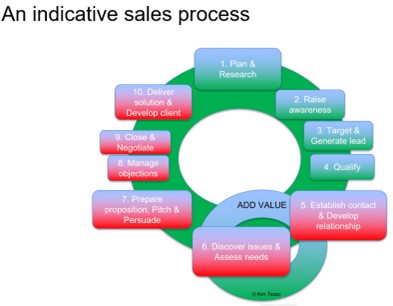
Earlier in December I facilitated another of MBL’s popular “Developing more work from referrers and intermediaries” full day LearnLive training sessions. With delegates from legal, accountancy, surveying, architectural and financial services firms there was lots to discuss. Dominant themes were referrals – the role of internal communications, messaging and storytelling and post-Covid “water cooler” moments. The poll results from the delegates are shown below.
Internal communications to promote referrals
Internal communication has a significant role to play in generating referrals from within and outside the firm. One poll result showed that 50% of delegates felt cross-selling didn’t occur because a lack of information about other services. Better internal communication can help fix this.
Cross-selling relies on many things – not least trust (again, poll results indicated that 14% of delegates felt lack of trust prevented cross-selling), the appropriate attitude towards client ownership and reward systems. There were suggestions about service level agreements and policies for handing over referred clients to help with trust issues. But professionals will be unable to spot opportunities to cross-sell if they are unaware of what their colleagues in other departments do and offer.
So using internal communications programmes to provide and update comprehensive “product” information becomes important. Furthermore, all professionals will network to some extent and there they are acting as ambassadors of the firm – and they are likely to get involved in conversations with existing clients, potential clients and referrers where they need awareness of a wide range of the firm’s services in order to spot opportunities, answer questions, join the dots and act as introducers to the right people within the firm.
There were many suggestions on how to promote product or service knowledge with internal communications:
- Lunch and Learn – There are various varieties of this approach including “Brown Bag Lunches” and “Pizza Lunches”. Essentially you are inviting people to join you over their lunch break (whether they are in the office or WFH) to hear about your department, its clients and the services provided. There were various suggestions on how to “mix it up” to ensure these sessions were entertaining and memorable.
- First Points of Contact – A written list, a directory or an app where people can type in a topic or question from a client and obtain a short description of the issue and signposts to the firm’s first points of contact or experts in the subject.
- Onboarding and Inductions – An overview of all the firm’s services should be provided when new staff join. Where firms have trainees undertaking seats in different teams it is helpful to ask them to summarise what they learned during their time to share with others. Their accounts are often from a more basic and relatable viewpoint than the experts.
- Video introductions – As well as web site material about each team’s services, many firms have video introductions to the work of a team with stimulating graphics and scenes to help convey the key clients and messages.
- Internal campaigns – Rather than require everyone in the firm to know about every service, organise a series of monthly campaigns which are focused communications and activities about a particular team for a whole month.
- Competitions and Games – Combine social activities with quizzes and games where there is a competitive element to how much people know about different services of the firm.
- Fresh air – We talked about using “netwalking” events to develop relationships with external referrers and these could be extended for members of staff who live in similar locations. Such walks are good for physical and mental health as well as promoting spontaneous interactions.
- Learn sports together – We talked about sessions to support groups of clients, referrers and staff to learn new sports and hobbies (e.g. golf or baking). Such training and practice sessions provide plenty of opportunities for spontaneous conversations and area also good for team building.
You can increase motivation to invest time in cross-selling by analysing how much there is to potentially gain by looking at the service gaps in the largest clients. Naturally there will be some clients who will never buy additional services from a firm. But equally there will always be some – even if you have to connect to different decision-makers – that will. Showing people the opportunity – the low hanging fruit – might make cross-selling easier and prompt motivation. For example, if a team can see that there are five major clients where there is an opportunity for them to promote their services then that might prompt some action.
Internal messaging and stories
Deciding what you want people to remember about you internally is just as important as what you want people externally to remember about you. So you can help internal communications by being clear in your messaging – no more than three key things (or services) that you want others to remember about you.
The delegates did an exercise to introduce each other – with memorable comments that made them stand out from the crowd. We tried to move away from using our job titles and describing what we did to talk about how we helped clients and with what types of challenges and outcomes. Words like personal, professional, friendly, proactive, dedicated, integrity, quality, trusted etc are so over-used that they become meaningless.
This relates to personal branding and positioning and how you introduce yourself to stand out from the crowd and be different. These articles expand on this idea:
Personal introductions: BrandMe the power of 3 in networking (kimtasso.com) – including the SHREK model
Lessons in leadership – personal brand, presence, stages (kimtasso.com)
Building a personal brand – Key Person of Influence (kimtasso.com)
It is also easier to remember stories rather than technical details or facts or figures. Many firms produce case studies for this purpose. Sharing stories about client successes is also a powerful PR tool externally. Compelling stories can help people remember your core skills and services. Storytelling is an important skill:
Video – The art of storytelling – Kim Tasso explains and demonstrates
selling legal services with storytelling (kimtasso.com)
Storytelling book reviews: The Story Advantage and The Story Factor (kimtasso.com)
Post-Covid Water Cooler Moments
Several delegates observed that before Covid, when everyone was in the office, there were plenty of opportunities to chat to colleagues in other departments in what are called “water cooler moments” or “corridor conversations”. And this spontaneous and effective method of internal communications was lost in the online, digital working-from-home environment.
There were several ideas about how to create similar spontaneous interactions in the digital space:
- Online networking – Online networking platforms like Remo provide an interesting digital space where people can “drop in” to individuals and groups and have a chat – just like in a real networking situation. There is also a facility to “shuffle” so you can effectively organise “speed dating” where random people are put together for a short period of time and asked to discuss a particular topic or share stories.
- Internal messaging – Many firms use messaging systems such as WhatsApp and Slack where you can create streams for informal and social chat.
- Virtual meeting rooms – “Always open” virtual meeting rooms where anyone can drop in at anytime and have a secure chat with anyone else who is in there. Some organisations randomly prompt staff to visit such a space at least once a week.
- Random allocation of video/coffee chats – Each week randomly allocate people from two different departments/locations to have a 15 minute video chat. There’s an App called Donut that randomly pairs co-workers through Slack and encourages them to have coffee together over a video call.
- Video “meet and greets” – Some firms have created series of internal entertaining videos or podcasts that last a few minutes and introduce people informally – with insights into their interests and hobbies as well as their work roles. These can be used to prompt informal chats during breaks and breakout session during online meetings.
- Guest drop-ins – Arrange for someone from another team to “drop in” for the final 5 minutes of regular team meetings. They might also stay and chat for a few minutes after the formal meeting ends.
- Email P.S. – Encourage people to provide a PS at the end of their internal emails where they mention a piece of work or recent transaction (without the jargon) of which they are particularly proud.
- Office time – Even with WFH guidance, most firms encourage people to attend the office on occasion. Some firms split teams and ask that they alternate visiting the offices. Many firms have changed their work space configurations – with more hot desks that naturally mix people up a bit. Careful scheduling of who is at the office on any day means that time for informal chats can be scheduled to create artificial water cooler moments.
There are many other suggestions for how to promote trust at a distance in this great book on Digital Body Language by Erica Dhawan
Poll Results
Is your role primarily:
- 70% Fee-earner
- 30% Marketing, business development and selling
What sector do you represent?
- 45% Legal
- 27% Property/surveying/architecture
- 18% Accountancy
- 9% Financial services
Which topics are of most interest:
- 36% Strategy and planning
- 43% Working with external referrers
- 7% Sales processes
- 7% Psychology of relationships
- 7% Key Account Management (KAM)
Is your approach to selling/business development more:
- 31% Cast the net wide – reach out to lots of people
- 31% Aimed at specific organisations and individuals
- 38% A combination
How much of your work is generated by internal and external referrals:
- 25% Less than 20%
- 17% 20% – 50%
- 42% 50% – 80%
- 17% Over 80%
The systems and information for referral management are:
- 0% Excellent
- 21% Very good
- 43% Average
- 29% Inadequate
- 7% Non-existent
The CRM systems used included: InterAction, Salesforce and those integrated with finance/billing systems
What are the three main reasons cross-selling doesn’t occur at your firm?
- 29% No incentive
- 14% Lack of trust between departments
- 79% Everyone too busy/lack of time
- 50% Lack of information about other services
- 64% We are in silos
- 7% Client resistance
- 29% Something else
Amongst the other reasons were a lack of confidence in talking to clients about other services and a lack of knowledge about the client organisation. Another factor was a recent merger where integration hadn’t progressed.
What do referrers do wrong when approaching you?
There were some interesting reactions to this question
- Immediately requesting discounts
- Assuming we will support them with no promise of us actually winning the business
- Getting our names wrong
- Being over-familiar or over-friendly
- Asking about a different area of expertise to mine
- Cold calling
- Lacking sincerity
Which activities do you find most effective for building relationships with referrers in Covid times?
- 8% Emails and newsletters
- 8% Social media
- 23% Telephone calls
- 23% Zoom or Teams meetings
- 31% Webinars and online networking/socials
- 8% Something else (e.g. virtual coffees, claim free brownies, hosting product training sessions)
To what extent do you use social media for referrer relationships?
- 90% Connecting (e.g. after meeting at a networking event)
- 80% Researching individuals and organisations
- 30% Monitoring/listening to their accounts
- 50% Liking and sharing their content
- 30% Endorsements, recommendations and linking to their accounts/posts
- 50% Sharing our content
- 10% Sharing joint content
How do you feel about selling?
- 8% Very uncomfortable
- 42% Uncomfortable
- 8% Neither comfortable nor uncomfortable
- 42% Comfortable
How much of your time do you spend selling?
- 36% 0-10%
- 36% 10-49%
- 9% About 50%
- 9% 50-80%
- 9% Almost 100%
How well do you think you understand the psychology of relationships?
- 65% Not well
- 27% Ok
- 9% Well
Do you think your personality is mostly (video introduction to personalities)
- 38% Dog
- 46% Cat
- 15% Bear
Do you have a KAM programme at your firm?
- 55% No
- 18% Yes, but it isn’t working very well
- 27% Yes, some teams work well with it
Delegate actions agreed
- Increase staff awareness of importance of face-to-face contact
- Spend more time on marketing strategy
- Appoint relationship managers and assign roles and responsibilities
- Research referrers
- Increase internal communication
- Obtain feedback from current referrers
- Target our key clients and referrers
- Re-evaluate our relationships
- Gain engagement from the top and teams on a new plan
- Use statistics to drive success
- Run a storytelling practice session (see video introduction to storytelling)
- Try new methods to generate referrals
- Develop “taxi” reports for key clients and referrers
- Gain better understanding of what other potential referrers we should target
Delegate key takeaways
- We need time and focus to plan – book regular time slots
- Build a realistic plan and stick to it
- Manage your referrer relationships
- Spend more time on managing referrer relationships
- Improve our internal communications for cross-selling
- Obtain testimonials from clients
- Look at things from a firm-wide perspective
- Learn the ins and outs of each referrer







